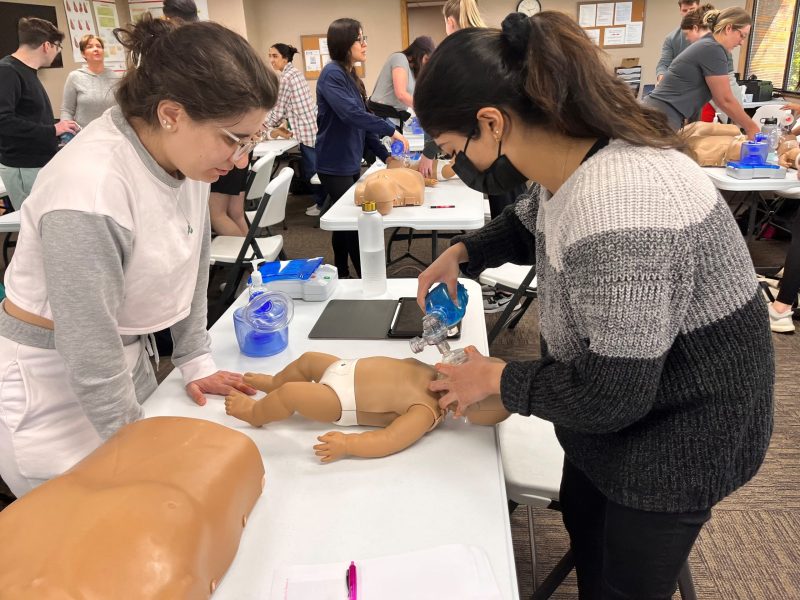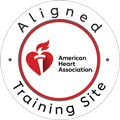In emergencies where every second counts, knowing how to perform cardiopulmonary resuscitation (CPR) and using an automated external defibrillator (AED) can save lives. Sudden cardiac arrest can happen to anyone, anywhere, and having bystanders equipped with the knowledge and skills to respond effectively can significantly improve survival rates. The American Heart Association (AHA) plays a crucial role in disseminating this knowledge through its Heartsaver CPR and AED course, designed specifically for those without a medical background. As the need for training in these life-saving techniques grows, so does the responsibility of the general public to become educated responders.
What is the AHA Heartsaver CPR and AED Course?
The AHA Heartsaver CPR and AED course is designed to teach essential life-saving skills to laypersons, workplace responders, and the general public. This course focuses on equipping individuals with the knowledge to perform CPR and use an AED effectively during emergencies. Participants learn how to perform CPR on adults, children, and infants, as well as how to relieve choking in people of all ages. The course culminates in certification, which is valid for two years, ensuring that responders are up-to-date with the latest techniques and guidelines.

Why is CPR and AED Training Important?
The importance of CPR and AED training cannot be overstated, especially when considering the staggering statistics surrounding sudden cardiac arrest. According to the AHA, nearly 350,000 out-of-hospital cardiac arrests occur in the United States each year, with a survival rate of only about 10%. However, studies have shown that immediate CPR and the timely use of an AED can double or even triple the chances of survival. This is where the concept of the “chain of survival” comes into play. Early recognition of cardiac arrest, activation of emergency medical services, early CPR, and early defibrillation are all crucial links in this chain that can lead to improved outcomes for victims.
Components of the AHA Heartsaver CPR and AED Course
The AHA Heartsaver CPR and AED course consists of several key components that ensure participants receive a comprehensive education.
CPR Techniques
Call Us Now
Get the Best CPR Class in Columbus Today!
The course includes CPR techniques, focusing on chest compressions and rescue breaths, emphasizing the importance of high-quality CPR and appropriate compression depth.
AED Use
Participants also learn how to use an AED, including recognizing cardiac arrest, activating the device, and following the step-by-step instructions for delivering a shock.
Infant and Child CPR
The course also addresses infant and child CPR, offering adaptations for smaller patients, and teaches techniques for relieving choking in adults, children, and infants.
To enhance learning, the course incorporates hands-on practice and video-based instruction, allowing participants to gain confidence in their skills.
Who Should Take the Heartsaver CPR and AED Course?
The recommended audience for the Heartsaver CPR and AED course is vast and varied. Individuals such as teachers, coaches, daycare workers, fitness instructors, security personnel, and family members of high-risk individuals will find the training particularly beneficial. Additionally, businesses can improve workplace safety and meet Occupational Safety and Health Administration (OSHA) requirements by having trained employees on staff. This training equips individuals with the necessary skills to respond effectively during emergencies, ensuring that workplaces and communities are safer.
The Benefits of Heartsaver CPR and AED Certification
The benefits of obtaining Heartsaver CPR and AED certification extend beyond individual preparedness. Those who complete the course report increased confidence in their ability to handle emergencies, enhancing overall safety in their communities and workplaces. Additionally, businesses with trained employees may enjoy potential insurance benefits and liability reduction, further emphasizing the value of investing in CPR and AED training. By becoming certified, individuals join a growing network of lifesavers, contributing to public safety and well-being.
How to Get Certified: Steps to Take the AHA Heartsaver CPR and AED Course
For those interested in obtaining certification, the process is straightforward. The first step is to find an AHA-approved training center or consider enrolling in online courses. The course duration varies, and options include in-person classes, blended learning, or fully online formats. Participants must complete a certification exam and a practical skill check to demonstrate their competence. After certification, individuals must renew their training every two years to ensure they remain proficient in the latest techniques and guidelines.
Common Misconceptions About CPR and AED Use
Despite the clear benefits of CPR and AED training, several misconceptions persist. One common myth is that only medical professionals can perform CPR.
In reality, anyone can learn these life-saving skills, and the training is designed to be accessible to all.
Another misconception is that AEDs are too complicated for laypeople to use. However, modern AEDs are user-friendly and provide step-by-step audio and visual prompts, making them easy to operate even for individuals with minimal training.
This simplicity underscores the importance of timely CPR and the effective use of an AED by non-professionals during emergencies.
Conclusion
The AHA Heartsaver CPR and AED course provides invaluable training that can empower individuals to save lives during critical emergencies. Understanding and mastering these life-saving skills are not only essential for healthcare professionals but also for anyone who wishes to be prepared for unexpected situations.
The accessibility of learning CPR and AED techniques makes it imperative for individuals to consider taking a course.
By equipping themselves with this knowledge, they can become proactive members of their communities, ready to respond effectively when it matters most. Take the first step toward preparedness today—enroll in a Heartsaver CPR and AED course and join the ranks of trained lifesavers dedicated to making a difference.


